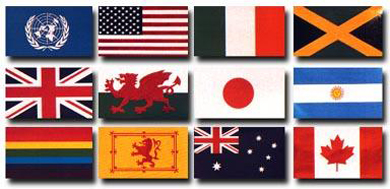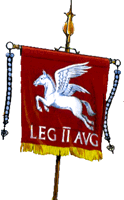vexill-
(Latin: flag, flags; standards, banners)
|
|
|
|
|
|
|
|
|
|
|
|
|
|
Someone who has a special yearning for flags and who may be collecting them, or information about them, as a personal hobby or for his or her individual pleasure: Erin was a vexillophile who had a fondness for ensigns because they are a part of daily life now and in the past by countries, provinces, cities, international bodies, organizations, and even companies.
A desire to study flags and to learn more about them: A special interest in vexillophilia is a result of the numerous fluttering colors in all shapes and sizes and designs that are much more meaningful than being merely decorative because every flag is a communication from one human being to another one.


A person who has a special wish to know more about flags of all kinds or about special types: The vexillophiliac is inspired by how flags are used to honor and to encourage, to commemorate and to remind the child in school, the soldier, the voter; as well as, rebels and the loyal citizens that the standard that is being waved expresses a view point which may be favorable or undesirable.
Anyone who has a special interest or fondness for flags of all kinds: Apparently vexillophilists have strong desires to collect all kinds of banners because of their shapes, designs, colors, and representations from the earliest times until the present.
An earnest desire for acquiring knowledge about as many emblems as possible and for learning about their special symbolic applications: Many vexillophilies that people develop are based on the concept that throughout history some ensigns have become the inspiration for many other colors; starting with the Stars and Stripes in 1777, which provided enthusiasm for developing many additional banners.
 1. In ancient Rome, a military standard or flag; or the troops serving under a separate standard; especially, a company of privileged veterans connected with a legion: The vexillum on the right is an illustration of a military banner of Roman times.
1. In ancient Rome, a military standard or flag; or the troops serving under a separate standard; especially, a company of privileged veterans connected with a legion: The vexillum on the right is an illustration of a military banner of Roman times.2. A banneret or a pennant: Karl was an avid collector of vexilla from many countries.
3. In Roman antiquity, a square flag, hanging transversely from the end of a spear by a wooden crosspiece, used especially by the cavalry: Again, such a vexillum is shown on the right.
4. In botany, the large upper posterior petal in a pea flower: The vexillum in a plant is also called the "banner" or the "standard".
5. In some ecclesiastical situations, a processional standard, banner, or cross: The following image is the Vatican City flag which is an example of a Catholic or church vexillum.

Also see additional information about flags at this Vexillology Information page.
Here are special links to Flags, Places, and Languages of the World pages.
For comments or suggestions, contact us at [email protected].
Showing page 2 out of 2 pages of 21 main-word entries or main-word-entry groups.

